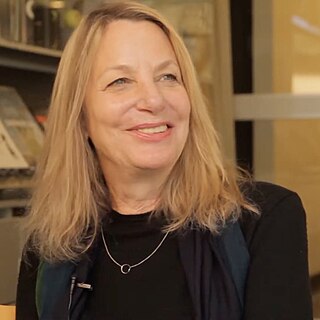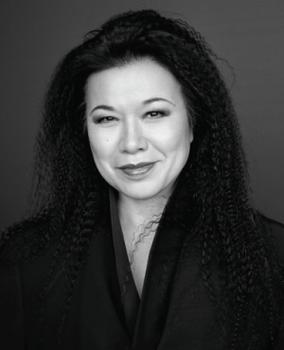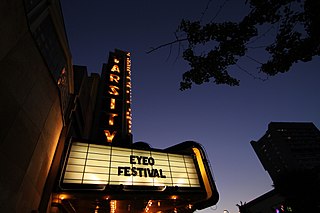
Skidmore, Owings & Merrill LLP (SOM) is an American architectural, urban planning and engineering firm. It was founded in 1936 by Louis Skidmore and Nathaniel Owings in Chicago. In 1939, they were joined by engineer John Merrill. The firm opened its second office, in New York City, in 1937 and has since expanded internationally, with offices in San Francisco, Los Angeles, Washington, D.C., London, Melbourne, Hong Kong, Shanghai, Seattle, and Dubai.
Robert Brunner is an American industrial designer. Brunner was the Director of Industrial Design for Apple Computer from 1989 to 1996, and is a founder and current partner at Ammunition Design Group.

Paula Scher is an American graphic designer, painter and art educator in design. She also served as the first female principal at Pentagram, which she joined in 1991.

Pentagram is a design firm. It was founded in 1972, by Alan Fletcher, Theo Crosby, Colin Forbes, Kenneth Grange, and Mervyn Kurlansky at Needham Road, Notting Hill, London. The company has offices in London, New York City, San Francisco, Berlin and Austin, Texas. In addition to its influential work, the firm is known for its unusual structure, in which a hierarchically flat group of partners own and manage the firm, often working collaboratively, and share in profits and decisionmaking.

April Greiman is an American designer widely recognized as one of the first designers to embrace computer technology as a design tool. Greiman is also credited, along with early collaborator Jayme Odgers, with helping to import the European New Wave design style to the US during the late 70s and early 80s." According to design historian Steven Heller, “April Greiman was a bridge between the modern and postmodern, the analog and the digital.” “She is a pivotal proponent of the ‘new typography’ and new wave that defined late twentieth-century graphic design.” Her art combines her Swiss design training with West Coast postmodernism.

Eiko Ishioka was a Japanese art director, costume designer, and graphic designer known for her work in stage, screen, advertising, and print media.

Fernanda Bertini Viégas is a Brazilian computer scientist and graphical designer, whose work focuses on the social, collaborative and artistic aspects of information visualization.

Michael Bierut is a graphic designer, design critic and educator, who has been a partner at design firm Pentagram since 1990. He designed the logo for Hillary Clinton's 2016 presidential campaign.
J. Abbott Miller or Abbott Miller is an American graphic designer and writer, and a partner at Pentagram, which he joined in 1999.

Marian Bantjes is a Canadian designer, artist, illustrator, typographer and writer. Describing her work as graphic art, Marian Bantjes is known for her custom lettering, intricate patterning and decorative style. Inspired by illuminated manuscripts, Islamic calligraphy, Baroque ornamentation, Marian Bantjes creates detailed work, often combining the forms of her disparate influences.
James Biber is an architect and partner in the firm Biber Architects, based in New York.
Martin M. Wattenberg is an American scientist and artist known for his work with data visualization. He is currently the Gordon McKay Professor of Computer Science at the Harvard University School of Engineering and Applied Sciences.
Lisa Strausfeld is an American design professional and information architect.

Jessica Walsh is an American designer, art director, illustrator and educator. She was a partner of the design studio Sagmeister & Walsh (2010–2019), and the founder of the creative agency &Walsh (2019–present). &Walsh is one of the .1% of creative agencies owned by women. She has taught at the School of Visual Arts (SVA).

Laura Kurgan is a South African architect and an associate professor at Columbia University Graduate School of Architecture, Planning and Preservation (GSAPP). She directs the interdisciplinary Center for Spatial Research at GSAPP, which she founded as the Spatial Information Design Lab in 2004. Since 1995, the architect has operated her own New York City based interdisciplinary design firm called Laura Kurgan Design. She has been awarded the Rockefeller Fellowship and a Graham Foundation Grant. Kurgan's work has been presented at prestigious institutions including the ZKM Karlsruhe, the Museum of Modern Art, the New Museum and the Venice Architecture Biennial.
Emily Oberman is a New York-based multidisciplinary designer and a partner at design studio Pentagram. Formerly, Oberman was a co-founder of design studio Number Seventeen and a designer at Tibor Kalman's studio M & Co.
Stefanie Posavec is a London-based information designer whose work focuses on non-traditional representations of data, born in 1981. She co-authored the 2016 book Dear Data with Giorgia Lupi.

Dear Data is a collection of postcards containing data recorded from the everyday lives of information designers Stefanie Posavec and Giorgia Lupi. The book was published in the United Kingdom by Penguin Press on September 1, 2016 and in North America by Princeton Architectural Press on September 6, 2016.
Marina Willer is a Brazilian-born graphic designer and filmmaker based in the United Kingdom.

The Eyeo Festival is a yearly conference for artists who work with data and code. It takes place in Minneapolis. The conference began in 2011, and has taken place yearly since then, typically at the Walker Art Center. Due to the COVID-19 pandemic, the event was put on pause for 2020 and 2021. Eyeo returned to Minneapolis in 2022, but was later put back on hiatus for 2023. There have been no updates on if/when Eyeo will be return.












